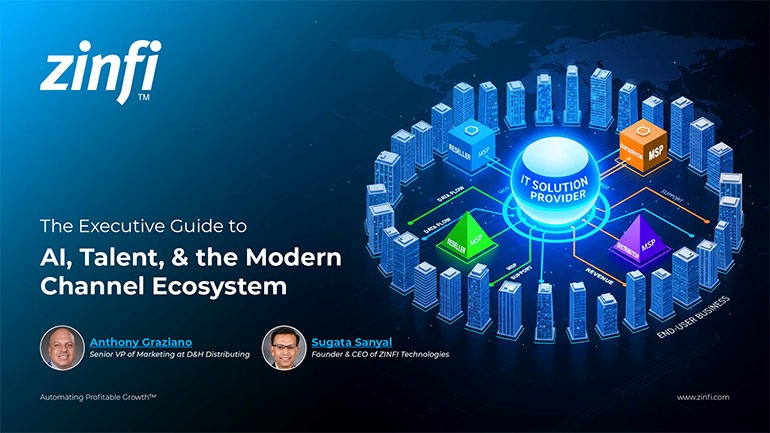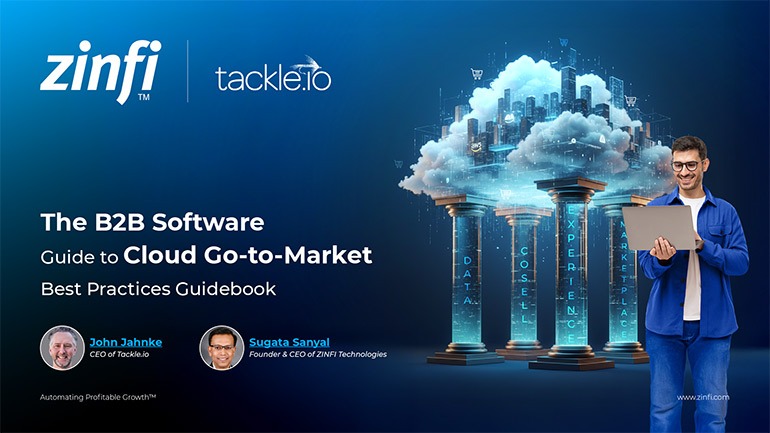Glossary - How to - Partner Social Marketing Strategy
How to Develop a Partner Social Marketing Strategy?
Introduction
Defining Partner Social Marketing Strategy
A partner social marketing strategy refers to the coordinated efforts between a company and its channel partners to leverage social media platforms for co-branded messaging, promotional campaigns, content distribution, and audience engagement. Unlike a traditional social marketing campaign executed solely by a brand, a partner-centric approach allows broader reach and deeper market penetration by enabling partners to amplify the brand’s voice while tailoring messages to local markets and specific customer segments. This approach enhances brand consistency, facilitates mutual growth, and creates a collaborative marketing ecosystem.
Relevance to PRM and Partner Automation
Within the Partner Relationship Management (PRM) framework, implementing a robust partner social marketing strategy is essential for driving partner enablement and ensuring scalable demand generation. Automation tools embedded in PRM platforms, such as ZINFI’s partner marketing automation suite, empower vendors to provide partners with pre-approved, customizable social content, campaign templates, and performance analytics, reducing marketing friction, improving compliance, and ensuring timely execution. By integrating social marketing into a PRM system, organizations can maintain consistency across channels, monitor real-time engagement, and refine strategies based on data-driven insights.
Key Takeaways:
Understanding Your Partners’ Audience:
To craft an effective partner social marketing strategy, it is critical to understand the unique characteristics of your partners’ audience. Each partner may cater to a different demographic, geographic region, or industry segment. Conducting joint audience profiling and leveraging data from CRM and social platforms helps vendors and partners align messaging with audience expectations. Surveys, analytics, and historical performance data uncover buyer personas and preferred communication channels. With a shared understanding, content can be adapted to reflect local language, cultural nuances, and pain points, ensuring greater resonance and engagement.
Creating Co-Branded Social Content:
Co-branded content plays a crucial role in amplifying brand presence and enhancing credibility. Start by providing branded templates that include visual assets, campaign messaging, and calls to action. Tools within PRM platforms, such as ZINFI’s partner marketing automation, create scalable content, allowing partners to personalize the material while preserving brand integrity. Focus on educational content, product launches, promotional offers, and success stories relevant to the partner’s audience. Equip partners with post-scheduling tools and calendar integration for streamlined publishing.
Enabling Through Partner Marketing Automation:
Automation lies at the heart of an effective partner social strategy. By leveraging PRM systems, vendors can offer dynamic libraries of social content, automated approval workflows, and lead tracking capabilities. Partners benefit from reduced manual effort, clear guidance, and real-time insights. ZINFI’s Unified Partner Management platform facilitates end-to-end automation, enabling seamless campaign execution across multiple social networks. Scheduled publishing, content localization, and analytics dashboards empower partners to run consistent, high-impact campaigns that align with vendor strategies.
Monitoring and Analyzing Campaign Effectiveness:
Measurement is key to understanding the success of a social marketing strategy. Establish KPIs such as reach, engagement, click-through rates, and conversions. Use integrated analytics tools within your PRM system to generate reports that track performance by partner, region, and campaign type. Identify top-performing content and partners to replicate success. Provide partners with feedback and insights through dashboards and regular performance reviews. This data-driven approach ensures continuous optimization and reinforces accountability.
Continuous Feedback and Improvement:
The social marketing landscape evolves rapidly, and ongoing feedback is essential for success. Encourage open communication channels for partners to share their experiences, challenges, and ideas. Host monthly check-ins or webinars to gather feedback and showcase new strategies or features. Use partner input to refine campaign templates, messaging frameworks, and training materials. Gamification and reward systems can also motivate partners to engage more deeply. Your strategy becomes more adaptive and partner-centric by fostering a collaborative improvement loop.
Summary of Key Takeaways:
Developing a successful partner social marketing strategy requires a deep understanding of your partners’ audience and a commitment to creating engaging, co-branded content. Through partner marketing automation tools, vendors can enable seamless execution, ensure consistency, and reduce the burden on partners. Monitoring campaign effectiveness with clear KPIs helps identify what works and provides a foundation for improvement. Most importantly, maintaining open feedback channels fosters continual refinement and stronger collaboration. These practices ensure your partner network is aligned, motivated, and equipped to amplify your brand’s presence across social platforms.
Key Examples:
- Automotive Manufacturing: In automotive manufacturing, partners such as dealerships and repair shops are key in reaching end-users. A partner social marketing strategy allows OEMs to equip these partners with content about new model releases, service packages, and promotional events. Through PRM platforms, manufacturers can push content to dealers, who can localize it with their branding and offers. For example, a campaign about electric vehicle launches can be adapted by partners to reflect local incentives or events, increasing relevance and response rates.
- Consumer Electronics: Consumer electronics vendors rely on retail and online partners to drive product awareness and sales. A social marketing strategy ensures that product announcements, how-to guides, and promotions are shared consistently. With ZINFI’s automation tools, partners can customize content with region-specific promotions and share product demos or influencer videos, increasing engagement and positioning partners as knowledgeable, trusted sources.
- Energy Production: Educating customers is essential for energy companies in the solar or renewable sectors. Partners such as installers or consulting firms can leverage vendor-provided educational materials and case studies to position themselves as experts. A unified social strategy ensures that messaging around sustainability, ROI, and technical innovation reaches the market. Automated scheduling tools also help partners post consistently, building trust and engagement.
- Financial Services: Partners, such as brokers and advisors, benefit from content that builds authority and informs clients. Vendors can supply compliant, up-to-date posts covering market trends, regulatory updates, and product offerings. Co-branded posts boost partner credibility while ensuring message integrity. PRM systems with compliance features allow content to be pre-approved and version-controlled, reducing risk while increasing campaign reach.
- Food and Beverage: For food brands, restaurant and retail partners are essential for driving visibility. Seasonal promotions, recipes, and product highlights are packaged into visually appealing social media kits. Partners can personalize these to showcase store-specific deals or local events. PRM tools enable bulk distribution of content and simplify compliance. This approach ensures brand consistency while enabling partner creativity and local engagement.
- Healthcare Services: Healthcare partners must strictly comply while promoting services, including clinics and pharmacy chains. Through social channels, vendors can offer health awareness campaigns, new service launches, and patient education materials. PRM platforms help enforce HIPAA-compliant messaging while allowing partners to localize and personalize. With analytics, vendors can track engagement trends and adjust messaging to improve outreach.
- Information Technology: IT vendors often have a vast network of resellers, MSPs, and VARs. A centralized social strategy helps push updates about software releases, security alerts, and training sessions. Partners can re-share content, add customer testimonials, or link to regional webinars. ZINFI’s partner marketing tools support content syndication, asset customization, and lead tracking to streamline execution.
- Pharmaceutical Development: Pharma companies can support research partners and medical practitioners with educational campaigns and compliance-approved product information. Social content focused on treatment breakthroughs, clinical trial updates, and patient outcomes helps educate and engage. PRM systems help ensure adherence to regulatory standards while allowing partners to distribute relevant content to their professional networks.
- Retail Industry: Retail partners operate in highly dynamic environments. Vendors can support them with content about new product launches, seasonal sales, and loyalty programs. Using automation, partners can receive social kits tailored to upcoming events. Vendors can refine campaigns and push more effective promotions by analyzing footfall data or sales spikes. Co-branded content strengthens brand affiliation and boosts conversions.
- Telecommunications: Telecom vendors collaborate with agents, ISPs, and distributors. Social campaigns can include updates about service plans, coverage improvements, or device bundles. Partners can localize these based on regional availability or languages. PRM solutions aid telecom providers in deploying targeted content and tracking usage across regions. Continuous optimization ensures high ROI on partner-led marketing efforts.
Conclusion:
A successful partner social marketing strategy integrates strategy and technology to align brand goals with partner capabilities. The introduction outlines that the core concept involves coordinated social campaigns driven through a PRM-enabled ecosystem. This approach allows brands to extend their digital reach, maintain consistency, and engage customers more effectively by leveraging the trusted voices of their partners.
The five key takeaways provide a roadmap for implementation. First, understanding your partners’ audiences allows for more targeted and resonant messaging. Second, co-branded content ensures brand integrity while empowering partners with the tools to engage their networks. Third, partner marketing automation through platforms like ZINFI simplifies campaign management, providing scheduling, approval, and analytic capabilities. Fourth, tracking and analyzing campaign effectiveness ensures that efforts are data-driven and continuously improving. Moreover, feedback loops foster collaboration, innovation, and ongoing refinement.
Across diverse industries—from automotive to healthcare to telecommunications—real-world applications demonstrate the versatility and impact of a well-executed partner social strategy. Whether driving product adoption in consumer electronics or educating clients in financial services, each industry benefits from tailored approaches that combine localized content with centralized guidance.
In the age of digital-first marketing, organizations must move beyond ad-hoc partner outreach. Embedding social marketing capabilities within your PRM system is no longer optional but a strategic necessity. By empowering partners with the right content, tools, and support, brands can amplify their voice, foster deeper relationships, and drive revenue growth.
As partner ecosystems evolve, the ability to execute seamless, scalable, and strategic social campaigns will differentiate the leaders from the laggards. Embrace this guide’s principles to position your organization and partners for long-term success in the digital marketplace.
Associated Keywords:
- Partner Marketing Campaigns
- Social Media Co-Branding
- Automated Partner Social Content














